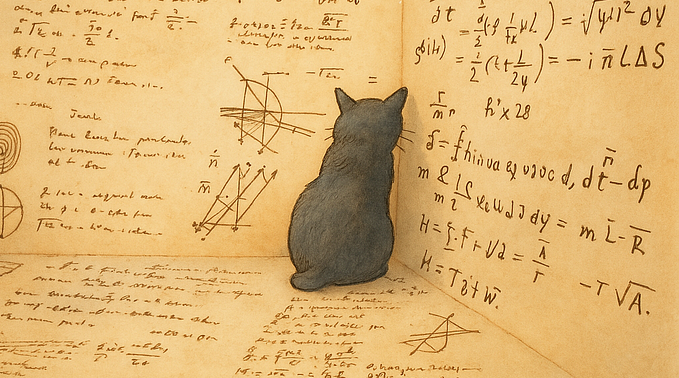
In this week’s meeting of the dozen students and postdocs of my research group at Harvard University, I asked: “What do you call a group of theorists without data?” My office was filled with silence. “Happy”, I answered, “because their theories will never be proven wrong.”
Given this perspective, happiness is not my highest priority as a theoretical astrophysicist. I lead the experimental search for objects of extraterrestrial technological origin within the Galileo Project, whose first collection of eight scientific papers just became publicly available on a new link.
I am deeply proud of our Galileo Project team and what we have accomplished so far. These publications mark the beginning of a new era in the investigation of Unidentified Aerial Phenomena (UAPs), Interstellar Objects (ISOs) and Interstellar Meteors (IMs). Our researchers have worked hard to find new ways to apply the state-of-the-art methods across many disciplines, seeking to answer questions that could never be adequately answered before now. With many of the instruments described in these papers now operational and producing data, I’m excited about the discoveries that lie ahead.
Since submitting the papers for peer review, the Galileo Project’s international and cross-institutional team has been busy testing and calibrating the many sensors and tools developed for this unique astronomical effort. Having field-tested the equipment even through the extreme weather of a New England winter, the project is now looking to leverage what it learned and bring additional locations online across the United States. In addition, Galileo Project researchers are now developing software to analyze data recorded both by field instruments as well as by Earth-observing satellites.

Moreover, this summer I will be leading a Galileo Project expedition to the Pacific Ocean at a total cost of $1.5M, aimed at retrieving fragments from the first known interstellar meteor, IM1. The properties of IM1 were summarized in a discovery paper, a material strength paper, a fragment size-distribution paper, and a localization paper. Since IM1 was moving faster than 95% of the local stars relative to the Sun before it entered the solar system, and also because IM1’s material strength was tougher than all other 272 meteors in NASA’s CNEOS catalog, it could potentially represent a Voyager spacecraft from a distant civilization that traveled through interstellar space for billions of years.
In preparation for the expedition, I just shared a memo with the team members — stating the underlying narrative for the mission:
“Dear IM1 expedition team members,
We are embarking on a major scientific data-acquisition trip with the goal of retrieving fragments from the first interstellar meteor, IM1. Because of its potential impact, our procedures and analyses must be well-documented and able to endure the most robust post-trip technical review. Specifically, we want procedures in place to anticipate:
· Any questions that someone may have “salted” the sample-acquisition process,
· Any questions that different teams sorted/processed samples differently or unevenly,
· Any questions that we brought back to Harvard University a biased or incomplete sample-set.
We can avoid all these potential complications by having up front a bullet-proof sample-acquisition, sorting, and tracking protocol.
To protect the scientific integrity of the first interstellar meteor (IM1) project and the individuals doing the sorting, separating, and analyses, we plan to follow these rules:
1. We will follow a standard sample acquisition sled-to-archive flow.
2. There will always be at least two individuals present for each step when samples are brought aboard, removed from the sleds, sorted, numbered, and archived.
3. Individual sled loads and their sample-set will be carefully documented and sequentially numbered (ID#) on a sheet (this starts the chain-of-custody with a time-date stamp).
4. Each sample-set will also have start-end seafloor coordinates for potential future follow-up.
5. Each sled-tow video will be reviewed in near-real-time to ensure that nothing large is inadvertently missed. A separate log of notes from these videos will be linked to ID#.
6. Movement of any sample-set from archive to lossless analysis and back to archive will be logged and time-stamped (chain-of-custody again).
7. There will be a single archive repository manager.
I thank you all for your essential contributions to this mission. We are about to embark on a search that could lead to a paradigm-shift in humanity’s view about its place in the Universe. You are each part of a very select team to accomplish that. Let us all work together as a team to ensure the success of our mission.”
Together with the administrators of the Harvard College Observatory, we arranged for storage of the retrieved sample and plan to analyze its composition with the best available scientific instrumentation.
During hour-long interviews on Bulgarian and Japanese television this week, I was asked: “Why do you expect extraterrestrial gadgets that reach Earth to represent technologies more advanced than ours?” My answer was that most stars formed billions of years before the Sun, and it takes half a billion years to traverse the Milky Way galaxy with chemical rockets. We are therefore most likely to witness their fastest and most resilient probes because they overtook the fleet of less advanced probes, like our Voyager spacecraft, sent during their early technological evolution. Our artificial intelligence (AI) systems can help us through the imitation process of their technological advances. Any extraterrestrial AI system we encounter will likely be more powerful than GPT-4 or the human brain.
My daughter, Lotem — who was just admitted to Harvard College, will help with any analysis of the sample we bring back from the expedition to the Harvard College Observatory.
Collecting experimental evidence about nature is a learning experience, as long as we allow ourselves to learn and do not pretend to know the answer in advance. The most frustrating experience I had as a kid was to ask a difficult question at the dinner table and see the adults in the room dismiss it just because they had no good answer. I made sure that Lotem did not have this experience while growing up.
The Galileo Project team members, including Lotem and me, are all agnostic about the outcome of our data collection and are looking forward to learning more about whatever the universe sent our way. This is the case even when the package disintegrated into tiny spherules, buried a mile deep under the surface of the Pacific Ocean.
ABOUT THE AUTHOR

Avi Loeb is the head of the Galileo Project, founding director of Harvard University’s — Black Hole Initiative, director of the Institute for Theory and Computation at the Harvard-Smithsonian Center for Astrophysics, and the former chair of the astronomy department at Harvard University (2011–2020). He chairs the advisory board for the Breakthrough Starshot project, and is a former member of the President’s Council of Advisors on Science and Technology and a former chair of the Board on Physics and Astronomy of the National Academies. He is the bestselling author of “Extraterrestrial: The First Sign of Intelligent Life Beyond Earth” and a co-author of the textbook “Life in the Cosmos”, both published in 2021. His new book, titled “Interstellar”, is scheduled for publication in August 2023.










